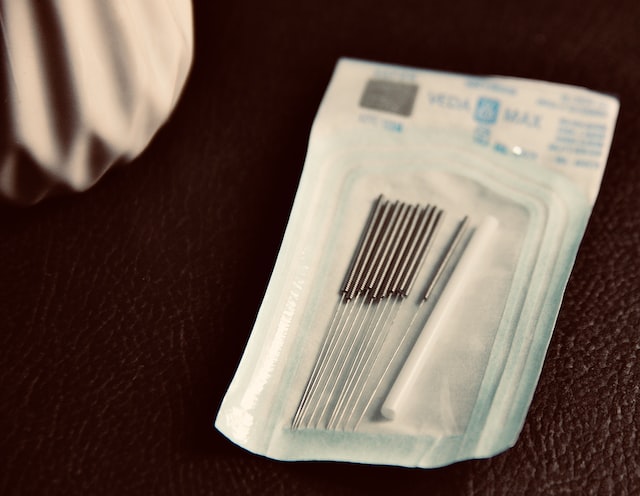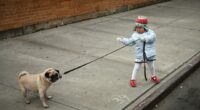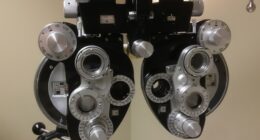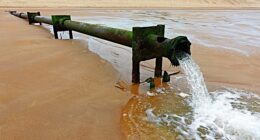Acupuncture is an ancient Chinese healing practice that involves the insertion of thin needles into the skin at specific points on the body. Dry needling is a relatively new treatment that uses thin needles to stimulate trigger points in the muscles.
Acupuncture Vs. Dry needling – Key differences

Although both acupuncture and dry needling are based on the same principles, there are some key differences between the two. Acupuncture is a traditional Chinese medicine technique that has been used for centuries, while dry needling is a relatively new Western approach. Acupuncture involves the insertion of thin needles into specific points on the body, while dry needling uses thicker needles and targets trigger points. Dry needling is often used to treat muscle pain, whereas acupuncture can be used for a variety of conditions.
There are a few key differences between acupuncture and dry needling. First, acupuncture is based on Traditional Chinese Medicine (TCM) principles, while dry needling is not. This means that acupuncture treats the whole person, not just the symptoms. Second, acupuncture uses very thin needles that are inserted into specific points on the body, while dry needling uses thicker needles that are inserted into trigger points. Third, acupuncture is typically used to prevent or treat illness, while dry needling is primarily used for pain relief. Finally, acupuncture is considered a holistic therapy, while dry needling is considered more of a Western medical approach.
What is acupuncture?
Acupuncture is a form of traditional Chinese medicine that has been practiced for over 2,000 years. It involves the insertion of thin, sterile needles into specific points on the body in order to stimulate the flow of energy, or qi, and promote healing. The points where the needles are inserted are called acupoints, and there are over 400 of them on the human body.
According to traditional Chinese medicine, illness and disease are caused by disruptions in the flow of qi, or energy, in the body. Acupuncture aims to restore the balance of qi by stimulating certain acupoints, which can help to relieve pain, improve circulation, reduce stress, and promote overall wellness.
Acupuncture is often used to treat a variety of physical and mental health conditions, including chronic pain, headaches, digestive problems, menstrual cramps, and stress and anxiety. Some people also use acupuncture to boost their overall health and wellbeing, or as a complement to other forms of medical treatment.
Acupuncture is a safe and effective form of treatment, and is performed by licensed and trained acupuncturists. Needles are single-use, sterile, and disposable, and the treatment is usually painless. Many people find acupuncture to be a relaxing and stress-relieving experience, and report feeling refreshed and rejuvenated after a session.
What is dry needling?
Dry needling is a modern therapeutic technique that is based on the principles of acupuncture. It involves the insertion of thin, sterile needles into the muscles and tissues of the body in order to relieve pain, improve function, and promote healing. Unlike acupuncture, which is based on traditional Chinese medicine and focuses on restoring the balance of energy (qi) in the body, dry needling is rooted in the Western anatomy and physiology.
Dry needling is used to treat a variety of musculoskeletal conditions, including chronic pain, myofascial pain syndrome, trigger points, and tension headaches. It is also used to improve range of motion, reduce muscle tension, and enhance athletic performance.
The needle insertion targets trigger points, which are areas of tightness and tenderness in the muscle that can cause pain and discomfort. By inserting the needle into these trigger points, the practitioner is able to stimulate the muscle and release the tension, which can result in reduced pain and improved function.
Dry needling is performed by trained and licensed health professionals, such as physical therapists and chiropractors, who have received specialized training in this technique. It is considered a safe and effective form of treatment, and many people report significant improvement in their symptoms after just a few sessions.
It is important to note that dry needling is not the same as acupuncture and is not based on the same principles or theories. It is also important to seek treatment from a qualified and experienced practitioner to ensure the best possible outcome.
What are the advantages and disadvantages of acupuncture?
Advantages of Acupuncture:
- Pain relief: Acupuncture is often used to relieve chronic pain, such as back pain, neck pain, and osteoarthritis. It can also be used to treat headaches, menstrual cramps, and other types of pain.
- Improved function: Acupuncture can improve the function of various systems in the body, such as the digestive, nervous, and immune systems. This can lead to an overall improvement in overall health and well-being.
- Drug-free: Acupuncture is a non-invasive, drug-free form of treatment, making it a great option for those who want to avoid the side effects associated with prescription medication.
- Relaxation: Acupuncture can help to reduce stress and anxiety, leading to a sense of relaxation and well-being.
Disadvantages of Acupuncture:
- Cost: Acupuncture can be expensive, especially if it requires multiple treatments. This can be a barrier for those who cannot afford it.
- Limited insurance coverage: In some countries, insurance companies do not cover the cost of acupuncture, which can make it difficult for some people to access.
- Needles: Some people may be scared of or uncomfortable with the idea of having needles inserted into their skin.
- Lack of scientific evidence: While there is some evidence to support the use of acupuncture for certain conditions, it is still not widely recognized by the scientific community and more research is needed to fully understand its benefits and limitations.
- Risk of infection: Although the risk is low, there is a chance of infection with acupuncture if the needles are not properly sterilized.
It’s important to consult with a licensed and experienced practitioner to determine if acupuncture is right for you and to discuss any potential risks or disadvantages.
What are the advantages and disadvantages of dry needling?
Advantages of Dry Needling:
- Pain relief: Dry needling can be effective in treating various types of pain, such as muscle pain, back pain, and neck pain.
- Improved function: Dry needling can improve the function of muscles, nerves, and other systems in the body, leading to an improvement in overall health and well-being.
- Fast results: Dry needling can produce rapid results, with many people noticing an improvement in their symptoms after just one treatment.
- Drug-free: Dry needling is a drug-free form of treatment, making it a great option for those who want to avoid the side effects associated with prescription medication.
Disadvantages of Dry Needling:
- Pain: Some people may experience discomfort or pain during the treatment, although this is typically mild and short-lived.
- Risk of injury: There is a small risk of injury associated with dry needling, such as muscle or nerve damage.
- Limited insurance coverage: In some countries, insurance companies do not cover the cost of dry needling, making it difficult for some people to access.
- Lack of scientific evidence: While there is some evidence to support the use of dry needling, it is still not widely recognized by the scientific community and more research is needed to fully understand its benefits and limitations.
- Needles: Some people may be scared of or uncomfortable with the idea of having needles inserted into their skin.
It’s important to consult with a licensed and experienced practitioner to determine if dry needling is right for you and to discuss any potential risks or disadvantages.
What are the risks involved in acupuncture and dry needling?
Acupuncture and dry needling both involve the insertion of needles into the skin, which can carry some risks. The most common risk associated with acupuncture is pain or discomfort during the treatment, which can be minimized by working with a licensed and experienced practitioner. Other risks include infection, injury to internal organs, and bleeding, although these are rare and can be prevented by using sterile needles and proper technique.
With dry needling, there is a small risk of injury to muscles, nerves, and other tissues. This can include bruising, muscle damage, and nerve damage, although these risks can be minimized by using proper technique and avoiding areas that are particularly sensitive. There is also a small risk of infection, although this can be prevented by using sterile needles and following proper cleaning and disinfection procedures.
It’s important to keep in mind that acupuncture and dry needling are relatively safe when performed by a licensed and experienced practitioner, and the benefits of these treatments can often outweigh the risks. However, it’s always a good idea to discuss the risks and benefits of any treatment with your practitioner, and to weigh the potential benefits against the potential risks to determine if acupuncture or dry needling is right for you.
What is the specific equipment used for acupuncture?
- Acupuncture needles: These are thin, stainless-steel needles that are inserted into the skin to stimulate specific points.
- Guidance devices: Some practitioners use devices like guides, lasers, or electrical stimulators to help them place the needles more accurately.
- Moxibustion equipment: Moxibustion is a form of acupuncture that involves burning a herb (mugwort) over specific points.
- Cupping equipment: Cupping is a form of therapy that involves using suction to lift and separate skin and muscle tissue.
- Heat lamps or heating pads: These are used to warm certain points to enhance the therapeutic effects of acupuncture.
- Massage equipment: Acupuncture often includes massage to help loosen tight muscles and enhance the flow of energy.
- TDP lamps: TDP lamps use a mineral plate to emit specific frequencies of heat and electromagnetic energy that are thought to stimulate the body’s healing processes.
These are some of the most common pieces of equipment used in acupuncture, but the specific equipment used can vary depending on the practitioner and the type of acupuncture being performed.
What is the specific equipment used for dry needling?
- Acupuncture needles: These are thin, stainless-steel needles that are used to penetrate the skin and stimulate trigger points.
- Guidance devices: Some practitioners may use guidance devices like lasers or electrical stimulators to help place the needles accurately.
- Needle guides: These are used to help the practitioner place the needle in the right location and to avoid injuring nearby structures.
- Disposable needle tips: Some practitioners use disposable needle tips to reduce the risk of infection.
These are some of the most common pieces of equipment used in dry needling, but the specific equipment used can vary depending on the practitioner and the type of dry needling being performed.
For what ailments is acupuncture used as a treatment?
Acupuncture is used as a treatment for a wide range of conditions, including:
- Pain management: Acupuncture is often used to treat various types of pain, including chronic pain, neck pain, back pain, knee pain, and headaches.
- Mental and emotional disorders: Acupuncture has been used to treat depression, anxiety, stress, and insomnia.
- Digestive disorders: Acupuncture can help alleviate symptoms of digestive disorders such as irritable bowel syndrome (IBS), constipation, and nausea.
- Respiratory disorders: Acupuncture has been used to treat conditions such as allergies, sinusitis, and asthma.
- Neurological conditions: Acupuncture has been used to treat conditions such as stroke, migraines, and neuropathic pain.
- Gynaecological and reproductive disorders: Acupuncture can help regulate menstrual cycles, relieve menstrual pain, and improve fertility.
- Musculoskeletal conditions: Acupuncture can help improve joint mobility and relieve arthritis pain.
- Cardiovascular conditions: Acupuncture has been used to lower blood pressure and improve circulation.
These are some of the most common conditions for which acupuncture is used as a treatment. However, it’s important to note that acupuncture may not be suitable for everyone and its efficacy for treating certain conditions is still being studied.
For what ailments is dry needling used as a treatment?
Dry needling is a therapeutic technique used to treat musculoskeletal pain and dysfunction. Some of the most common conditions for which dry needling is used as a treatment include:
- Chronic pain: Dry needling can help relieve chronic pain in the neck, back, shoulder, and knee.
- Muscle tension and spasms: Dry needling can help relax tight and painful muscles.
- Tendinitis and bursitis: Dry needling can help alleviate pain and improve mobility in areas affected by tendinitis and bursitis.
- Headaches and migraines: Dry needling has been shown to be effective in reducing the frequency and intensity of headaches and migraines.
- Whiplash injuries: Dry needling can help alleviate pain and promote healing after a whiplash injury.
- Tennis elbow and golfers elbow: Dry needling can help reduce pain and improve function in these conditions.
- Plantar fasciitis: Dry needling can help alleviate pain and improve mobility in the foot.
These are some of the most common conditions for which dry needling is used as a treatment. However, it’s important to note that dry needling may not be suitable for everyone and its efficacy for treating certain conditions is still being studied.
How to choose the correct treatment?
(Photo by Katherine Hanlon on Unsplash )

Choosing the correct treatment involves evaluating one’s symptoms and health condition, consulting with a healthcare professional, considering the available options, weighing the potential benefits and risks, and taking personal factors into account. It’s important to seek the advice of a trusted healthcare provider who can guide you through the process and make an informed decision based on your specific needs and circumstances. Additionally, it’s important to keep an open dialogue with your healthcare provider throughout the treatment process and make any necessary adjustments as your health condition evolves.
Featured Image by Katherine Hanlon on Unsplash









